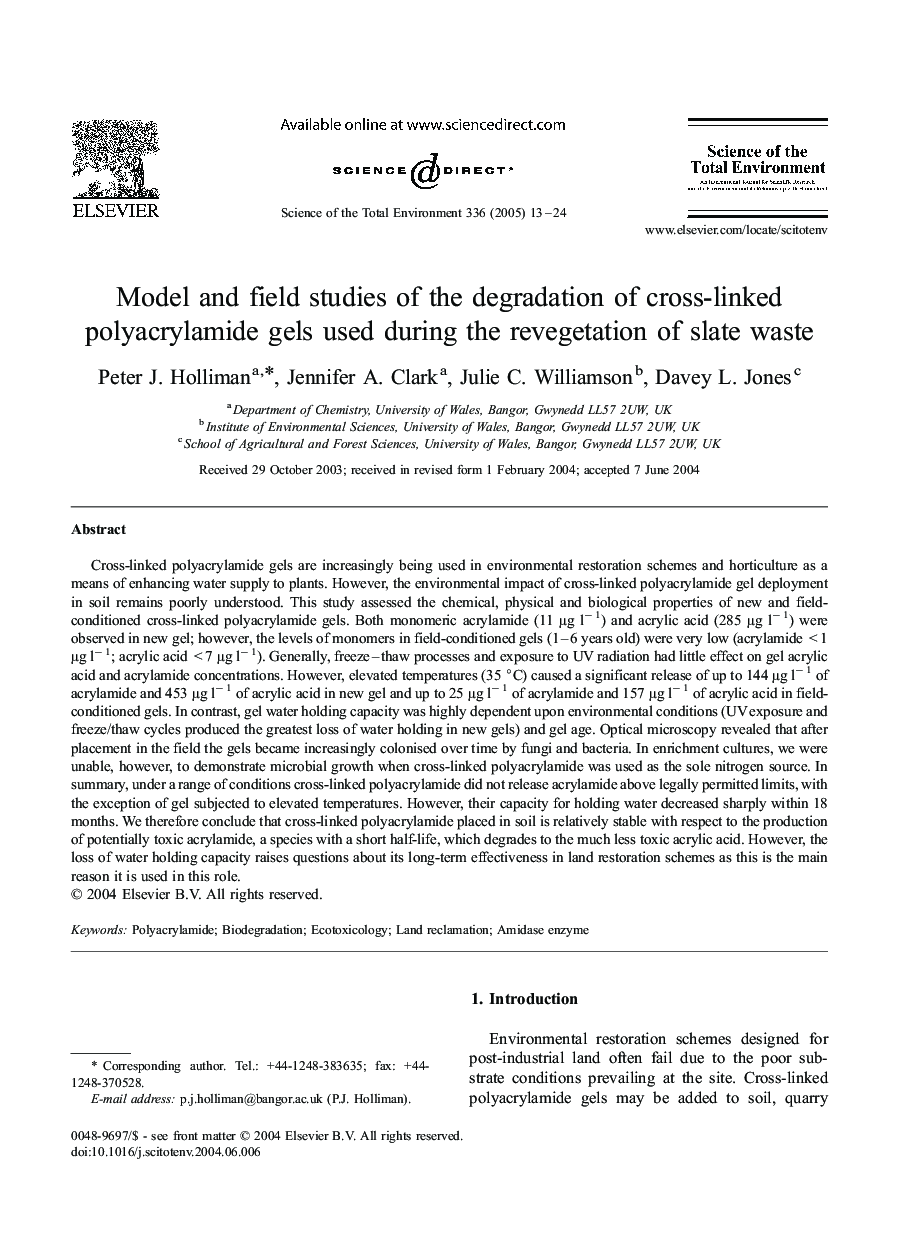| Article ID | Journal | Published Year | Pages | File Type |
|---|---|---|---|---|
| 10111027 | Science of The Total Environment | 2005 | 12 Pages |
Abstract
Cross-linked polyacrylamide gels are increasingly being used in environmental restoration schemes and horticulture as a means of enhancing water supply to plants. However, the environmental impact of cross-linked polyacrylamide gel deployment in soil remains poorly understood. This study assessed the chemical, physical and biological properties of new and field-conditioned cross-linked polyacrylamide gels. Both monomeric acrylamide (11 μg lâ1) and acrylic acid (285 μg lâ1) were observed in new gel; however, the levels of monomers in field-conditioned gels (1-6 years old) were very low (acrylamide <1 μg lâ1; acrylic acid <7 μg lâ1). Generally, freeze-thaw processes and exposure to UV radiation had little effect on gel acrylic acid and acrylamide concentrations. However, elevated temperatures (35 °C) caused a significant release of up to 144 μg lâ1 of acrylamide and 453 μg lâ1 of acrylic acid in new gel and up to 25 μg lâ1 of acrylamide and 157 μg lâ1 of acrylic acid in field-conditioned gels. In contrast, gel water holding capacity was highly dependent upon environmental conditions (UV exposure and freeze/thaw cycles produced the greatest loss of water holding in new gels) and gel age. Optical microscopy revealed that after placement in the field the gels became increasingly colonised over time by fungi and bacteria. In enrichment cultures, we were unable, however, to demonstrate microbial growth when cross-linked polyacrylamide was used as the sole nitrogen source. In summary, under a range of conditions cross-linked polyacrylamide did not release acrylamide above legally permitted limits, with the exception of gel subjected to elevated temperatures. However, their capacity for holding water decreased sharply within 18 months. We therefore conclude that cross-linked polyacrylamide placed in soil is relatively stable with respect to the production of potentially toxic acrylamide, a species with a short half-life, which degrades to the much less toxic acrylic acid. However, the loss of water holding capacity raises questions about its long-term effectiveness in land restoration schemes as this is the main reason it is used in this role.
Related Topics
Life Sciences
Environmental Science
Environmental Chemistry
Authors
Peter J. Holliman, Jennifer A. Clark, Julie C. Williamson, Davey L. Jones,
